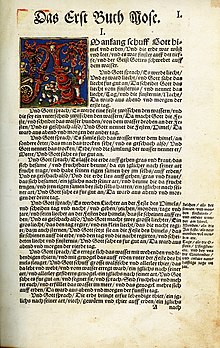
German literature comprises those literary texts written in the German language. This includes literature written in Germany, Austria, the German parts of Switzerland and Belgium, Liechtenstein, Luxembourg, South Tyrol in Italy and to a lesser extent works of the German diaspora. German literature of the modern period is mostly in Standard German, but there are some currents of literature influenced to a greater or lesser degree by dialects.
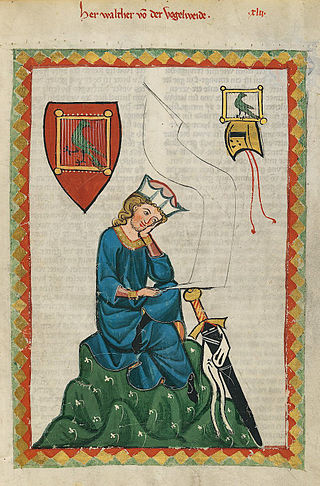
Minnesang was a tradition of lyric- and song-writing in Germany and Austria that flourished in the Middle High German period. This period of medieval German literature began in the 12th century and continued into the 14th. People who wrote and performed Minnesang were known as Minnesänger, and a single song was called a Minnelied.

Johann Nikolaus Forkel was a German musicologist and music theorist, generally regarded as among the founders of modern musicology. His publications include Johann Sebastian Bach: His Life, Art, and Work, the first substantial survey on the life and works of Johann Sebastian Bach.

Johann Cochlaeus (Cochläus) was a German humanist, music theorist, and controversialist.

Sebastian Brant was a German humanist and satirist. He is best known for his satire Das Narrenschiff.
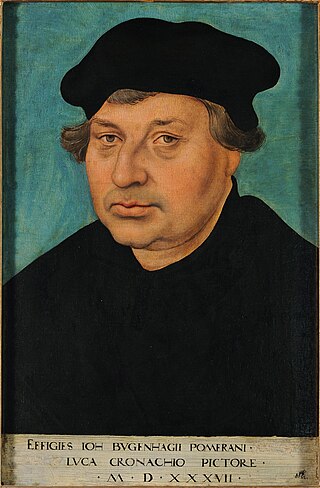
Johannes Bugenhagen, also called Doctor Pomeranus by Martin Luther, was a German theologian and Lutheran priest who introduced the Protestant Reformation in the Duchy of Pomerania and Denmark in the 16th century. Among his major accomplishments was organization of Lutheran churches in Northern Germany and Scandinavia. He has also been called the "Second Apostle of the North".
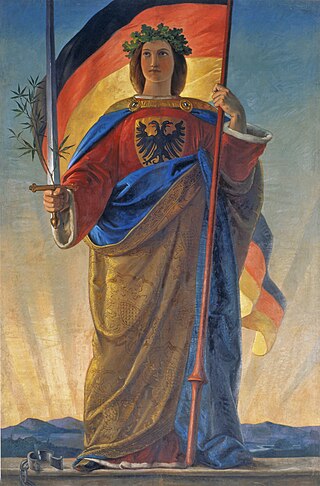
Germania is the personification of the German nation or the Germans as a whole. Like many other national personification symbols, she appeared first during the Roman Era. During the Medieval era, she was usually portrayed as one of the lands or provinces ruled by the emperors of the Holy Roman Empire, and not as the most prominent but in a subordinate position to imperial power and other provinces. Around 1500, together with the birth of the Holy Roman Empire of the German Nation, Emperor Maximilian I and his humanists reinvented her as Mother of the Nation.

The German-speaking states of the early modern period were divided politically and religiously. Religious tensions between the states comprising the Holy Roman Empire had existed during the preceding period of the Late Middle Ages —notably erupting in Bohemia with the Hussite Wars (1419–1434). However, the defining religious movement of this period, the Reformation, would result in unprecedented levels of violence and political upheaval for the region.
Camden House, Inc. was founded in 1979 by professors James Hardin and Gunther Holst with the purpose of publishing scholarly books in the field of German literature, Austrian Literature, and German language culture. Camden House books were published in Columbia, SC until 1998. When the company became an imprint in that year, place of publication moved to Rochester, NY.

"Ach Gott, vom Himmel sieh darein" is a Lutheran chorale of 1524, with words written by Martin Luther paraphrasing Psalm 12. It was published as one of eight songs in 1524 in the first Lutheran hymnal, the Achtliederbuch, which contained four songs by Luther, three by Speratus, and one by Justus Jonas. It was contained in 1524 in the Erfurt Enchiridion. It is part of many hymnals, also in translations. The text inspired vocal and organ music by composers such as Heinrich Schütz, who set it as part of his Becker Psalter, and Johann Sebastian Bach, who based a chorale cantata on it. Mozart used one of its tunes in his opera The Magic Flute.

"Aus tiefer Not schrei ich zu dir", originally "Aus tieffer not schrey ich zu dir", later also "Aus tiefer Noth schrei' ich zu dir", is a Lutheran hymn of 1524, with words written by Martin Luther as a paraphrase of Psalm 130. It was first published in 1524 as one of eight songs in the first Lutheran hymnal, the Achtliederbuch, which contained four songs by Luther, three by Paul Speratus, and one by Justus Jonas, and also appeared the same year in the Erfurt Enchiridion. It is part of many hymnals, also in translations. The text inspired vocal and organ music from the Renaissance to contemporary, including composers such as Johann Sebastian Bach, who based a chorale cantata on it, Felix Mendelssohn and Max Reger.
Middle High German literature refers to literature written in German between the middle of the 11th century and the middle of the 14th. In the second half of the 12th century, there was a sudden intensification of activity, leading to a 60-year "golden age" of medieval German literature referred to as the mittelhochdeutsche Blütezeit. This was the period of the blossoming of Minnesang, MHG lyric poetry, initially influenced by the French and Provençal tradition of courtly love song. The same sixty years saw the composition of the most important courtly romances. again drawing on French models such as Chrétien de Troyes, many of them relating Arthurian material. The third literary movement of these years was a new revamping of the heroic tradition, in which the ancient Germanic oral tradition can still be discerned, but tamed and Christianized and adapted for the court.

Christian Weise, also known under the pseudonyms Siegmund Gleichviel, Orontes, Catharinus Civilis and Tarquinius Eatullus, was a German writer, dramatist, poet, pedagogue and librarian of the Baroque era. He produced a large number of dramatic works, noted for their social criticism and idiomatic style. In the 1670s he started a fashion for German "political novels". He has also been credited with the invention of the mathematical Euler diagram, though this is uncertain.
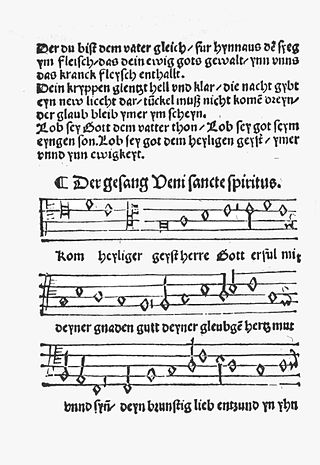
"Komm, Heiliger Geist, Herre Gott" is a Lutheran hymn for Pentecost, with words written by Martin Luther based on "Veni Sancte Spiritus, reple tuorum corda fidelium". The hymn in three stanzas was first published in 1524. For centuries the chorale has been the prominent hymn (Hauptlied) for Pentecost in German-speaking Lutheranism. Johann Sebastian Bach used it in several chorale preludes, cantatas and his motet Der Geist hilft unser Schwachheit auf, BWV 226.
"Vater unser im Himmelreich" is a Lutheran hymn in German by Martin Luther. He wrote the paraphrase of the Lord's Prayer in 1538, corresponding to his explanation of the prayer in his Kleiner Katechismus. He dedicated one stanza to each of the seven petitions and framed it with an opening and a closing stanza, each stanza in six lines. Luther revised the text several times, as extant manuscript show, concerned to clarify and improve it. He chose and possibly adapted an older anonymous melody, which was possibly associated with secular text, after he had first selected a different one. Other hymn versions of the Lord's Prayer from the 16th and 20th-century have adopted the same tune, known as "Vater unser" and "Old 112th".

Daniel Vetter was an organist and composer of the German Baroque era.
In the Middle High German (MHG) period (1050–1350) the courtly romance, written in rhyming couplets, was the dominant narrative genre in the literature of the noble courts, and the romances of Hartmann von Aue, Gottfried von Strassburg and Wolfram von Eschenbach, written c. 1185 – c. 1210, are recognized as classics.

König Rother is the earliest Middle High German epic poem. It consists of 5,204 lines of rhymed couplets. The author is unknown, but was probably a clergyman writing in Bavaria. It was written no earlier than 1152, probably before 1180. The earliest manuscript, Heidelberg Cpg 390, is from around 1200 and is also the only complete copy. Three fragmentary manuscripts from the 13th and 14th centuries are known.
